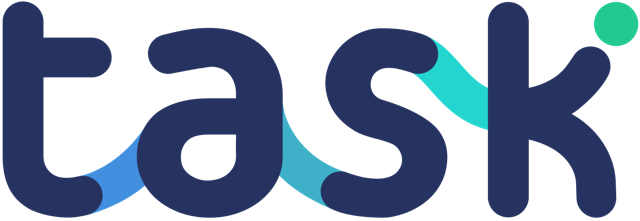You can add tasks via the mobile application or website – but in all cases a task is defined best using our standard JSON format. This is how you would add a task via our API.
The building blocks of the Task JSON are:
- The main task details such as name, time outs, regional information, how it gets processed and by who
- The way in which a task will get processed using our component library — Within the “processing_components” property one or more components may be defined
Here is an example:
{
"task": {
"name": "This is the main title of the task",
"show_name": true, // Show or hide the task name? Options are: true, false - default true
"details": "Additional details of the task - inserts images, video's, audio plus limited html tags.",
"send_to_timeline": true // defaults to true, option false - updates project timline with the completed task
"region_based": false, //allocate the task to Taskers in a geo-location
"lat": 0,
"lng": 0,
"radius": 300,
"task_ttl": 0, // How many minutes before this task expires and is removed, 0 means never.
"user_ttl": 0, // If the task has been allocated to a Tasker, how many seconds do they have to process it before it times out and can be allocated to another Tasker, 0 means never time it out.
"process_count": 0, // Sets number of times a task can be processed, 0 means unlimited
"user_multi_process": true, // If true a single Tasker can complete the same task multiple times
"points": 1, // The amount of points to assign to successful completion of this task
"repeat": after_completion, // Options are: after_completion, daily, weekly, monthly, yearly
"repeat_schedule": after_completion:0, // Options are: after_completion:seconds, daily, weekly:day1;day2.., monthly:day-number1;day-number2.., yearly:mm-dd1;mm-dd2..
"components_attributes": [
{
"component_type": "media",
"label": "Take a picture",
"name": "interview",
"required": "yes",
"extra": {
"instructions": "",
"max_length": 120 // Max audio file length in seconds
}
},
{
"component_type": "tags_collection",
"label": "Select tags",
"name": "tags",
"required": "yes",
"extra": {
"instructions": "",
"values": [
{"value": 1, "text": "Wow"},
{"value": 2, "text": "Glitch"},
{"value": 3, "text": "Exec report"},
{"value": 4, "text": "Compliance issue"},
{"value": 5, "text": "Call back"}
]
}
},
{
"component_type": "text_area",
"label": "Tell us how you are feeling?",
"name": "my_feelings",
"required": "no",
"extra": {
"instructions": "",
"character_limit": 140
}
}
]
},
"meta_data": [ // Optional - leave out if you do not need it
{
"label": "Any label you want to give",
"value": "Any value"
},
{
"label": "Any second label you want to give",
"value": "Any second value"
}
}
]
}This examples has three components defined in the processing_components property, namely:
- media – task worker can take photos
- tags_collection – task worker can choose from a set list of tags
- text_area – task worker can type written text in a text field
This is just a simple example of how a task is constructed.
Task processing logic
Whether a task is available for processing will depend on these factors, in this order:
- If task_ttl has passed, then the task is no longer available
- Is process_count still active? If process count was defined as integer X, then have we completed (number this task has been processed – X = 0)? Once we complete this number, the task is no longer available (remember setting process_count=0 means it never runs out)
- Does user_multi_process = true? If not, a single Tasker can only process a task once
